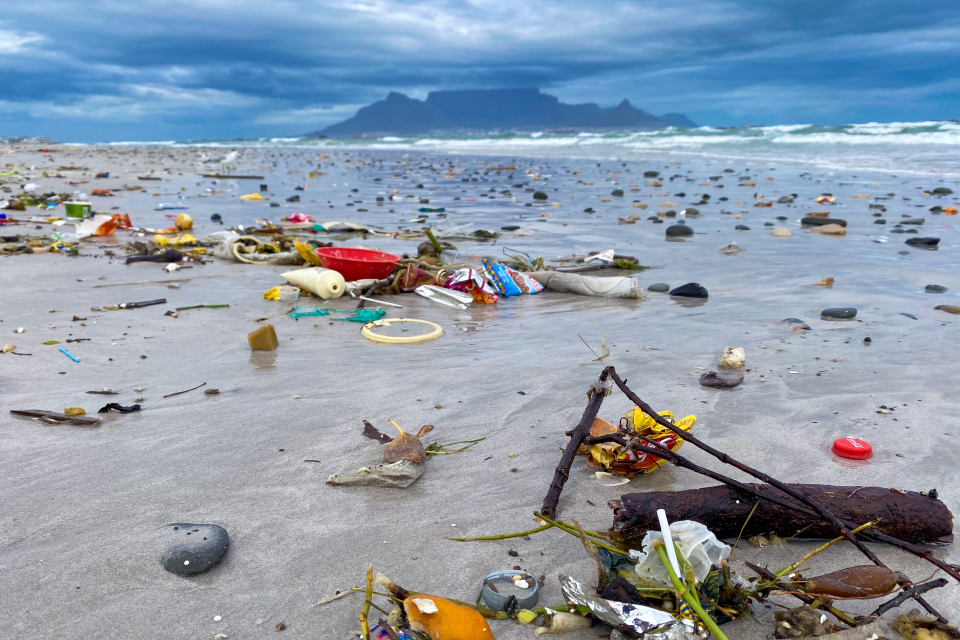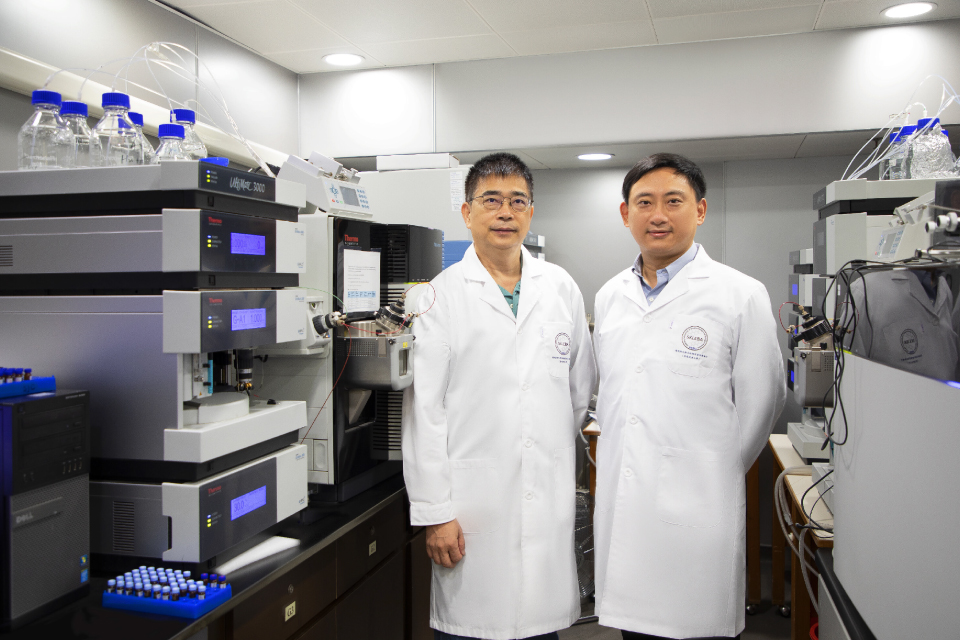Discover HKBU
Breathe safe! Safeguarding lung health against airborne plastics
29 Aug 2025


The omnipresence of plastics
“In modern society, it’s impossible to avoid plastic use completely,” says Professor Yang Zhu, Assistant Professor from the Department of Biology of HKBU, at the outset. A recent study by Professor Yang, Professor Cai Zongwei, Chair Professor of the Department of Chemistry, and PhD candidate Mr Chen Leijian of the Department of Chemistry has revealed that invisible airborne pollutants, namely microplastics (MPs) and nanoplastics (NPs), jeopardise lung health. However, far from being a tale of foreboding, the findings serve as a call to action to be vigilant about plastic use, mindful of consumption habits, and prioritise conservation over convenience.
The research team re-created real-world whole-body exposure by allowing mice to breathe in plastic-laden air for 60 days. “Our goal is to create an experiment that simulates the human inhalation exposure experience,” Professor Yang says, emphasising the significance of this research. “With the unique set up of this study, we were able to explore and monitor the adverse impacts of MPs and NPs in a controlled environment. What makes it especially meaningful is that the animals were exposed by natural breathing at environmentally relevant concentrations. This allows us to better understand what hidden dangers these pollutants could pose to people. Just as years of toxicological research have deepened our understanding of the hazardous particulate matter PM2.5, so too must our comprehension of airborne plastics.”
Inhaling hidden health hazards
The findings show plastic particles spreading throughout the body of the mice, reaching the bloodstream, spleen, and even the brain, with major impact occurring in the lungs. Surprisingly, larger plastic particles (1 micrometre) caused more impact on the lungs than smaller ones (80 nanometres), despite the latter travelling farther within the body.
Professor Yang points out that while larger, ingested plastic particles may often be excreted, inhaled particles stay much longer in the lungs and may contribute to lung tissue stiffness and scarring, which could make breathing increasingly difficult. The potential pulmonary toxicity of the larger plastic particles that remained in the lung is also more severe than that of microplastics that enter the bloodstream, highlighting the urgency of understanding size-dependent toxicity.
Where did about 80% of non-recycled plastics go?
Another reason for the pressing need for enhanced detection methods and toxicology research is that previous surveys reported only 21% of plastics are recycled or incinerated. This begs the question: What happens to the other 79% of plastics?
“Once released into the environment, plastic is considered a ‘persistent’ pollutant. Even though some types of plastics are degradable, most only break down into smaller pieces, they will not fully disappear. About 80% of non-recycled plastics may eventually enter the environment, where they can fragment into tiny particles, some of which become invisible airborne pollutants,” states Professor Yang.
Choosing conservation over convenience
Education once again plays a crucial role in cultivating habits that ensure the air we breathe is safe. By adopting more environmentally friendly practices and promoting mindful consumption, individuals and governments alike can help mitigate the impact of plastics on public health and the environment.
“The spirit of research is to keep exploring. What we have done so far is just basic research. If the ultimate goal is step 10, we are still at step 1 or 2 currently. More awareness and in-depth research in toxicology are needed to enhance the efforts in the detection of plastic pollutants and effectiveness of plastic degradation, identification of harmful particles before they enter the human body, and monitoring of their impact, and even informing policy-making,” Professor Yang concludes.
Click here for more details of the research findings.

